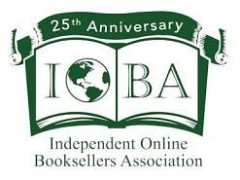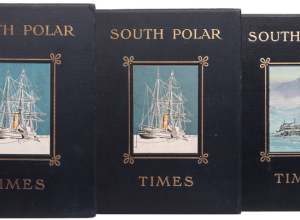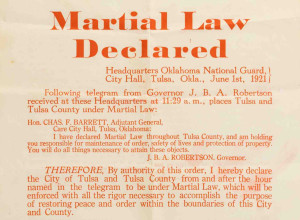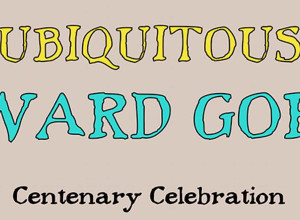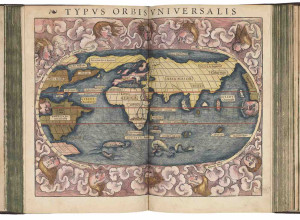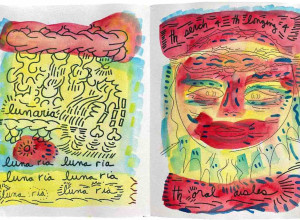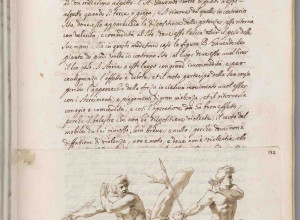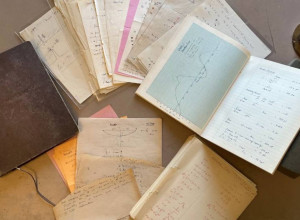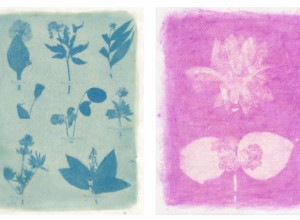Bright Young Librarians: Michael Taylor
Our series profiling the next generation of special collections librarians continues today with Michael Taylor, Assistant Curator of Books and History Subject Librarian at Louisiana State University.
How did you get started in rare books?
I applied to be a student assistant at my college library when I was a freshman, really just looking for a job shelving books. I ended up being hired by the Special Collections department because they needed somebody who could read music. Working with old books seemed a lot more interesting than any of my other job options, so I stayed on until I graduated, then went off to Indiana University to get my MLS, specializing in rare books and manuscripts librarianship. A part-time job in public services and digital imaging at the Lilly Library turned into a full-time one, then the opportunity to work as a curator came up at LSU. It has all been a great experience!
What is your role at your institution; what do you specialize in as a librarian?
What is your role at your institution; what do you specialize in as a librarian?
I'm a jack of all trades. Acquisitions, reference, outreach, teaching, exhibitions... there's a lot to keep me busy! I like to spend as much time as I can developing our various rare book collections, working on exhibits, and just digging around in the stacks to see what I can find and share it with others. I hesitate to say I have specialized in anything (I actually think being a generalist has its advantages), but I guess I feel most at home working with early printed books, natural history, and Americana. I have also enjoyed doing some research on antebellum plantation libraries and early print culture in Louisiana.
Favorite rare book / ephemera that you've handled?
My interests are very broad, so it's hard to pick a favorite, but I definitely have a soft spot for Edward Curtis's and Karl Bodmer's books on Native Americans, which we have at LSU, and I'm still pretty excited about one of our recent acquisitions, Jan Vredeman de Vries's book on linear perspective from 1604, sometimes considered an early example of surrealist art. I also like books that have an interesting "life story." For example, we have a few books from the library of Pierre-Clément de Laussat, the last governor of colonial Louisiana. He included a moving passage in his memoirs about how he acquired books as a young man in France in the 1770s but then had to leave many of them behind in Louisiana after he handed it over to the Americans in 1803. "There was no memory, no joy, no sorrow in my life in which the books had not played some part," he wrote. "They had followed my fate, and one of its strange aspects was that I had come to the banks of the Mississippi to separate from them." I think he would be glad to know that some of his books are still here over 200 years later and are still being used.
What do you personally collect?
I got hooked on the history of cycling several years ago and have found it to be an affordable area to collect. Even bicycle "incunables" from the 1860s and '70s are relatively cheap. Most of my collection is from the 1890s. I have found some terrific postcards, photographs, catalogs, trade journals, and advertising ephemera, and even managed to acquire a small archive of a bicycle manufacturing company with interesting letterheads from all around the U.S.
What excites you about rare book librarianship?
I can honestly say I learn something every day, and hardly a week goes by when I don't find something surprising in the stacks. Working with donors can be full of surprises, too. I recently went to a donor's house to pick up a box of magazines and left with 500 science fiction novels. I also love it when I can get other people "fired up" about rare books. Our annual showing of Audubon's Birds of America draws a crowd of over 200 people, ages 8 to 80. If they aren't glowing with excitement when they come in, they definitely are when they leave! The event was featured in a 2011 Wall Street Journal article titled "The Joys of Slow Looking."
Thoughts on the future of special collections / rare book librarianship?
Digitization will continue to reshape the special collections landscape, but I think it will have a generally positive effect. It's not like the physical books and archives are going away. We're just opening another door to them. LSU's school slogan is "Love Purple, Live Gold." In Special Collections, I like to say that we "Love Digital, Live Analog." Researchers will increasingly rely on digital resources when they simply want to read a text. For the most part, I'm cool with that. As long as we are able to articulate why physical books still matter, we will still have people coming through our door. At the end of the day, I don't see why e-books and rare books can't coexist.
Any unusual or interesting collection at LSU you'd like to draw our attention to?
As a matter of fact, we just started a new one. After taking a course at Rare Book School this summer about non-traditional materials, I came home and started brainstorming with my colleagues about what we could collect at LSU that might appeal to people outside of our usual clientele but also support scholarship in a variety of disciplines and complement our existing holdings. Vampire literature was what we came up with! I'm sure it will raise a few eyebrows, but I think it fits perfectly with our collections of Gothic and Victorian literature, science fiction and fantasy, occult science, "outsider" literature (from the library of Romanian-American writer Andrei Codrescu), and even our local writers collection (Anne Rice is a native New Orleanian, and a surprising number of vampire novels are set in Louisiana). As questionable as some of the material may be as literature, it's a publishing phenomenon that has endured since at least the 1750s, influencing everything from opera to advertising, and except for a few things like the first edition of Bram Stoker's Dracula, it's something we can collect on a budget.
Any upcoming exhibitions you're working on?
Our next exhibition will be La Langue Mondiale: French as the Language of Art and Thought. It is being produced in conjunction with a visit by Marc Fumaroli, a French historian, former director of the Académie française, and author of When the World Spoke French. The first-floor gallery is being curated by students. Upstairs, we'll be displaying a few volumes of plates from the Description de l'Egypte (the record of Napoleon's scientific expedition to Egypt), selections from Diderot's Encyclopédie, a section on French naturalists and explorers, some volumes from our stellar collection of early French dictionaries, and two cases of materials about what I call "the Enlightenment in the swamp," i.e., philosophy and science books from eighteenth- and early nineteenth-century Louisiana libraries.





